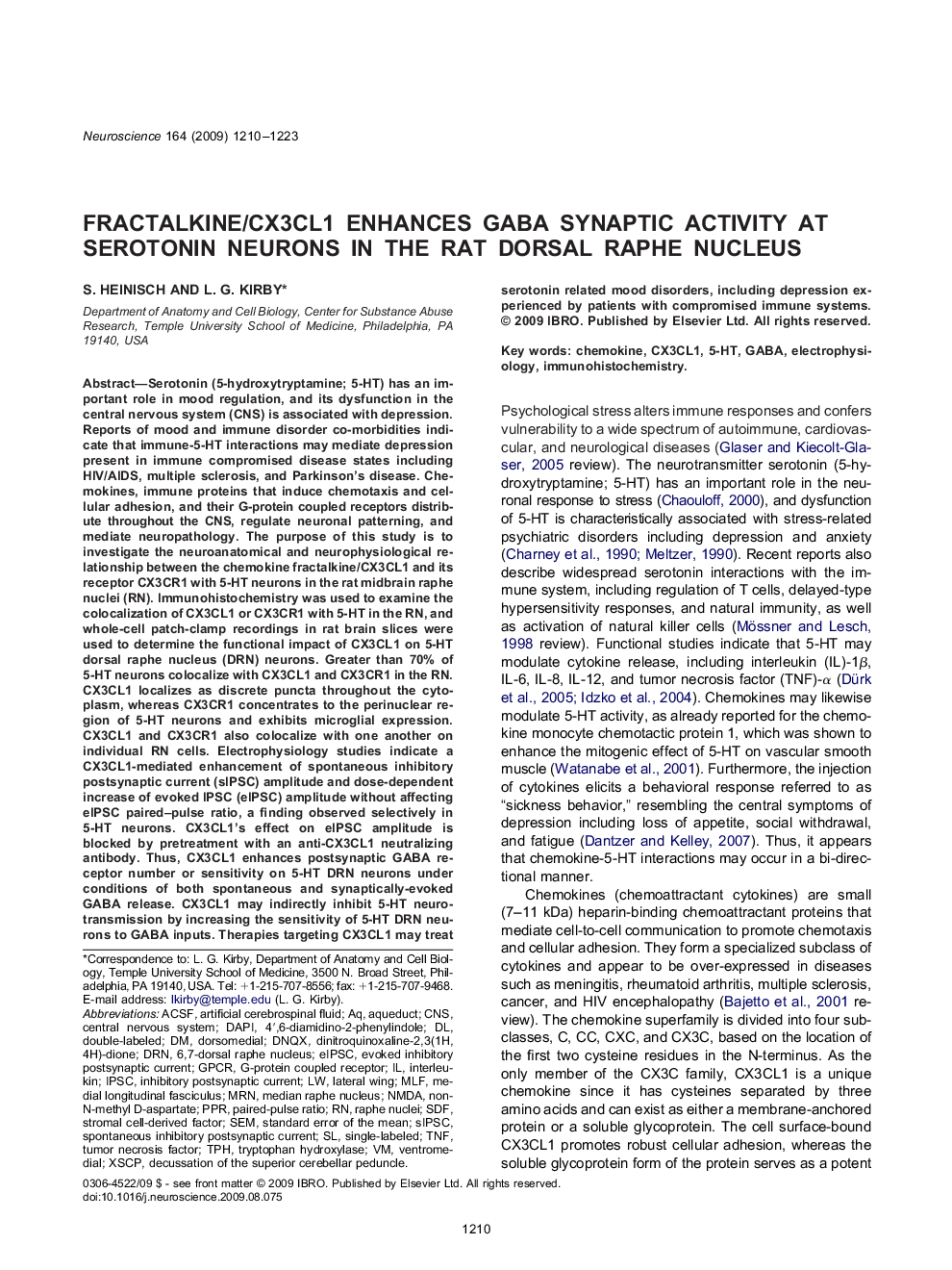| Article ID | Journal | Published Year | Pages | File Type |
|---|---|---|---|---|
| 6277507 | Neuroscience | 2009 | 14 Pages |
Abstract
Serotonin (5-hydroxytryptamine; 5-HT) has an important role in mood regulation, and its dysfunction in the central nervous system (CNS) is associated with depression. Reports of mood and immune disorder co-morbidities indicate that immune-5-HT interactions may mediate depression present in immune compromised disease states including HIV/AIDS, multiple sclerosis, and Parkinson's disease. Chemokines, immune proteins that induce chemotaxis and cellular adhesion, and their G-protein coupled receptors distribute throughout the CNS, regulate neuronal patterning, and mediate neuropathology. The purpose of this study is to investigate the neuroanatomical and neurophysiological relationship between the chemokine fractalkine/CX3CL1 and its receptor CX3CR1 with 5-HT neurons in the rat midbrain raphe nuclei (RN). Immunohistochemistry was used to examine the colocalization of CX3CL1 or CX3CR1 with 5-HT in the RN, and whole-cell patch-clamp recordings in rat brain slices were used to determine the functional impact of CX3CL1 on 5-HT dorsal raphe nucleus (DRN) neurons. Greater than 70% of 5-HT neurons colocalize with CX3CL1 and CX3CR1 in the RN. CX3CL1 localizes as discrete puncta throughout the cytoplasm, whereas CX3CR1 concentrates to the perinuclear region of 5-HT neurons and exhibits microglial expression. CX3CL1 and CX3CR1 also colocalize with one another on individual RN cells. Electrophysiology studies indicate a CX3CL1-mediated enhancement of spontaneous inhibitory postsynaptic current (sIPSC) amplitude and dose-dependent increase of evoked IPSC (eIPSC) amplitude without affecting eIPSC paired-pulse ratio, a finding observed selectively in 5-HT neurons. CX3CL1's effect on eIPSC amplitude is blocked by pretreatment with an anti-CX3CL1 neutralizing antibody. Thus, CX3CL1 enhances postsynaptic GABA receptor number or sensitivity on 5-HT DRN neurons under conditions of both spontaneous and synaptically-evoked GABA release. CX3CL1 may indirectly inhibit 5-HT neurotransmission by increasing the sensitivity of 5-HT DRN neurons to GABA inputs. Therapies targeting CX3CL1 may treat serotonin related mood disorders, including depression experienced by patients with compromised immune systems.
Keywords
5-HTXSCPTNFCX3CL1dorsomedialMRNventromedialPPRTphDNQXIPSCeIPSCDRNGPCRNMDAaCSFDAPIMLFSDF4′,6-diamidino-2-phenylindoleG-protein coupled receptorsIPSCaqueductElectrophysiologyImmunohistochemistryinterleukininhibitory postsynaptic currentSpontaneous inhibitory postsynaptic currentstandard error of the meanCNScentral nervous systemStromal cell-derived factortumor necrosis factorMedial longitudinal fasciculusdecussation of the superior cerebellar peduncleartificial cerebrospinal fluidSEMevoked inhibitory postsynaptic currentpaired-pulse ratiomedian raphe nucleusraphe nucleitryptophan hydroxylaseChemokineGABA
Related Topics
Life Sciences
Neuroscience
Neuroscience (General)
Authors
S. Heinisch, L.G. Kirby,
